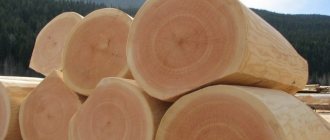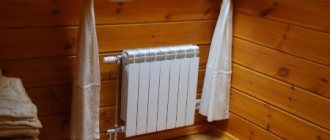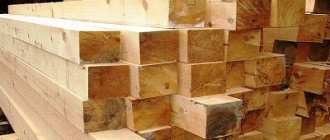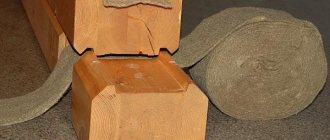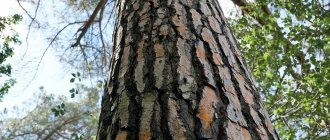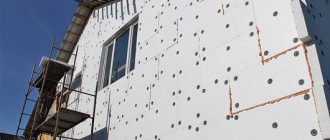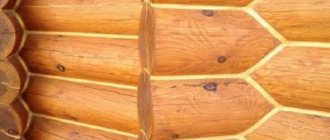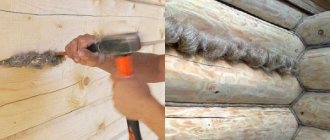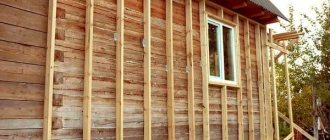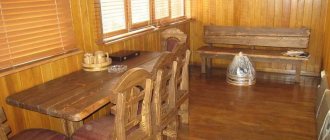Vilaterm and Energoflex sealing harness made of foamed polyethylene is a protective heat-saving sealant that is used for various elements of house construction and sealing seams in log houses and wooden houses made of timber and houses made of rounded logs.
Photo: Vilaterm harness - sealing for seams and joints between logs and between beams. You can buy such a harness at a wholesale price from our company. We sell them at retail in small lots in bundles as in the photo, subject to pickup from our warehouse in Balashikha, Moscow region. You can buy Vilaterm and Energoflex bundles in bulk in bulk. Large coils are shown in the photo along with small bundles of cords, or as they are also called, cords made of foamed polyethylene - heat-insulating materials for various seams in building structures.
Photo: Buy Vilaterm and Energoflex harness and cord at retail, this is either a visit to our warehouse or independently or through us - ordering from courier companies. We remind you once again that we sell this material at retail on a self-pickup basis (without delivery). And for wholesale, accordingly, there is delivery from TK PEC, Zheldorekspeditsiya, Business Lines, Baikalservice, KIT, etc.
Production and purpose of harnesses
A sealing harness is produced (Vilatherm and Energoflex) by foaming polyethylene. The structure of the sealing harnesses is cellular and uniform, closed in appearance. It has good thermal insulation, sound insulation, shock absorption, waterproofing and sealing properties. A sealing harness is capable of suppressing noise, for example, in the log house of a wooden house, and protecting metal and wooden structures from corrosion and condensation. Vilaterm harnesses and Energoflex harnesses are capable of high quality retention of heat in log houses and wooden houses made of logs and timber.
The process of filling gaps between logs
If the gap between the logs is even and approximately the same, you can push the insulation into the recesses with a special wide spatula - a road worker. This allows you to speed up your work. If the recesses are uneven, with narrow gaps, it is better to use a tool with a sharp tip. If the cracks are crooked and you have to drive the sealant into them at an angle, then it is better to use an oblique metal caulk.
You can process seams and gaps with jute in different ways. The choice of method depends on the size of the cracks and the desired aesthetics. There are 2 main approaches to laying the seal:
- Stretch. The compaction material is taken in individual strands and pushed with a thin tool along the gap between the logs. A roll is formed from the hanging remains of jute and forcefully compacted into the groove using a thin tool and a hammer. This method is suitable for processing small cracks and allows you to create good thermal insulation. But the wall does not look entirely aesthetically pleasing due to the remnants of insulation peeking out from under the logs.
- Into the set. This method allows you to process even the largest gaps. To do this, jute fibers of the required length are taken, which are then wound into balls. The larger the gap, the larger the ball you need to form. Then the formed balls are filled tightly into the cracks using a chisel and hammer. When using this method, the edges of the insulation do not protrude from the gaps between the logs, making the treated walls look more aesthetically pleasing.
Caulking should be done evenly, in a circle, level by level. You should move from bottom to top. If you treat each wall separately, the entire structure may become warped due to uneven distribution of gravity. One should take into account the fact that after caulking, the structure can grow in height by almost 15 cm.
Installation and assembly rules
Photo: a sealing harness made of foamed polyethylene is used for insulating wooden houses and log houses between logs and between ordinary sawn and planed profiled timber.
Photo: in panel and monolithic housing construction, Vilatherm and Energoflex are used as sealing and insulating materials for acrylic and polyurethane sealants.
Photo: installation diagram of sealing harnesses in the construction of stone and panel houses and other monolithic reinforced concrete structures.
The installation includes a Vilaterm foamed polyethylene sealing harness and an Energoflex harness, which is very convenient due to its flexibility and ease of use. This is a light, elastic, but at the same time strong, durable material. A sealing harness is used when working with almost all building materials.
The use of polyethylene foam bundles in sealing the crown joints of wooden houses, log cabins of saunas and baths
Currently, Energoflex sealing harness and Vilaterm harness are often used, instead of traditional caulking, for sealing - sealing seams (grooves, cracks and joints) in wooden houses made of timber (timber houses) and log houses (houses made of simple chopped and rounded logs ). But, it is necessary to remember that polyethylene sealing harness can be used in wooden log houses and wooden houses made of timber - only, exclusively in dried (dry) walls of houses made of timber and wooden houses made of logs.
Photo: polyethylene foam rope is usually white.
Vilaterm is nothing more than a sealing harness.
Vilaterm sealing harness is always a high-quality harness that will serve you for more than 25 years. The material is completely environmentally friendly and safe to use. The properties of the Vilaterm harness provide reliable protection from moisture, blowing and frost. Vilaterm is similar in properties to modern insulation materials, but has many more advantages. Vilaterm is used in a wide construction environment, where everything serves as a “plug of cracks, grooves, seams, joints.”
It is comfortable, simple and elastic. They eliminate leaks in apartments, protect against fungi and dampness on the walls, insulate houses, including wooden houses - log houses and other buildings for the winter, produce sound insulation and seal seams, grooves, joints between beams, logs and between window and door frames.
Vilaterm harness is a universal material made of polyethylene foam.
Energoflex harness is a clean and environmentally friendly material. The properties of Energoflex are similar to the Vilaterm tourniquet, so it is used as an alternative to the second one. Energoflex is produced in various forms: roll, tube, bundle (cord).
Energoflex in the form of a pipe is designed to protect heating and water pipes. Energoflex in the form of a bundle is used as insulation for seams between panels and between logs and between beams in wooden log and timber houses and log buildings. It is used as protection for a wooden house. The bundle roll is used in the insulation of sewer and main pipes. Energoflex is a fairly universal material, just like the Vilaterm tourniquet.
Both strands are used in insulating log houses of wooden houses (sealing inter-crown joints, seams, grooves, cracks) after the initial shrinkage of the wooden wall of the log house (bath) has been carried out. Most often, Vilaterm is used to insulate the crown joints of wooden houses.
It fills the seam, which saves sealant, produces thermal insulation, and serves as a gasket between the wood and the sealant for a wooden house. Before insulation, it is necessary to prepare the seams of the wall of a log house made of wood. It is necessary to clean them from dust, varnish and paint. If you carry out work in the summer, then moisten the surface a little. To make an even seam, you need to use construction tape. It is imperative to use the sealant together with a sealing harness; otherwise, if the wood begins to leak, the entire seam (groove, joint between logs) will become unusable, otherwise it will be attached to the harness and only touch the logs at three points.
What are the advantages of jute caulk?
Many new finishing materials hide pitfalls. Metal gets hot, plastic products are difficult to recycle, some synthetic polymers melt and are considered harmful to health and are also a threat to the environment. But jute is different. It is a natural product like wood. What does it give:
- Environmental friendliness and safety. The basis of this material is a plant. That is, we are dealing with natural, environmentally friendly fibers. They do not emit various toxic fumes, do not accumulate static electricity, and do not pose any health risks.
- Strength. The fibers contain a lot of lingin (12%). This is a resin that provides a margin of strength and durability. Therefore, the material does not deteriorate from moisture, sunlight and temperature changes, does not rot or mold. It constantly retains its properties, serves for a long time and reliably protects the house.
- Economy. Installing jute inter-crown insulation does not require special skills or expensive tools. You can handle the installation of the finishing on your own without hiring craftsmen. There is also no need to cover the entire area of the log house, therefore, the footage is reduced and money is saved. Considering the low price, this is an excellent solution.
And lastly, jute rope has a golden color with a woody tint; it goes well with a wooden surface. At the same time, it has a beautiful, neat weave, it takes up little space in the log house and is not conspicuous - you can choose a finish of any density.
Characteristics of VILATERMA
| The name of indicators | Values |
| Density, kg/m3 | 25 — 41 |
| Wide operating temperature range, °C | -60 — +82 |
| Low water absorption, % in 24 hours, less | 1 |
| Vapor permeability, mg/mchPa | 0,0029 |
| Thermal conductivity, W/μ | 0,0345 |
| Impact noise reduction index, dB | 21 — 28 |
| Modulus of elasticity, mPa | 0,55 |
| Water absorption by mass, % no more | 3-3.5 |
Is it possible, using modern tape insulation, to do without secondary caulking?
No you can not. Despite the high surface density and uniform thickness of the insulation layer along its entire length, when settling a house, linen and jute fabric still shrinks up to 5–6% in its height, which is 10–15 cm per floor. This means that the resulting cracks will have to be sealed. This can only be avoided in the case of a building made of laminated veneer lumber, and not at all because of the special properties of the insulation, but only because such buildings themselves are practically not susceptible to sedimentary processes and lose only 1–1.5 cm of height per two floors .
Price – List (2022 prices)
Cord (harness - foamed polymer)
for sealing joints, seams, cracks in wooden and panel houses
| NAME | Price per linear meter (rub.) | Packaging (linear meters) | Cost , rub.) |
| Ø 6 mm | 3,90 | 500 | 1 950,00 |
| Ø 8 mm | 4,30 | 500 | 2 150,00 |
| Ø 10 mm | 5,80 | 500 | 2 900,00 |
| Ø 12 mm | 6,20 | 500 | 3 100,00 |
| Ø 15 mm | 6,40 | 250 | 1 600,00 |
| Ø 15 mm | 500 | 3 200,00 | |
| Ø 20 mm | 7,00 | 252 | 1 764,00 |
| Ø 20 mm | 500 | 3 500,00 | |
Caulking Tools
The toolkit includes:
- A stackable caulk with a blunt blade for working “as a set”; it is better to have two types of tools: with a 10-centimeter blade for caulking crowns and a 2-centimeter blade for cracks;
- The road worker for laying twists “in a stretch” has a wide blade thickened towards the bottom. A semicircular notch is made along the entire length of the blade;
- Breaking caulking with a wedge-shaped blade is driven into the cracks to widen them.
The tool is made of hardwood or soft metal and has a handle that is comfortable for work. A mallet is used as a percussion instrument - a hammer with a wooden or rubber striker.
User reviews
Below is a review from the owner of a wooden house living in Moscow near the MKAD - Roman Gavrilov.
“I recently bought a log house of a wooden house, I’m very pleased with it. But a couple of days ago, after heavy rains, I noticed dampness on the walls. It became clear that the problem area was the outer seam, and that was where the leak was coming from. It's a pity that I didn't notice it when buying a house. When specialists arrived to eliminate this defect, it turned out that the moss that was used in the mowing was eaten by birds, and in some places it was not there at all.
Something had to be done. A young guy, having looked at our walls, ran into the car and brought sealant for a wooden house and some white material shaped like a pipe. It was very deftly bent, flattened and placed into the wall.
Then the whole thing was sealed with wood sealant. After these measures, there was no more dampness on the walls. The craftsmen dealt with it quickly and promised that no more wet spots would appear. I was surprised and asked what kind of material this is? They told me it was a sealing harness. It does not allow moisture to pass through and retains heat. Now I recommend it to everyone I know with a similar problem!”
As you can see, Vilaterm and Energoflex foamed polyethylene sealing harnesses are necessary in many cases.
How to caulk the corners of a log house with jute
When caulking a log house, special attention is paid to the corners; this largely determines whether the house will be warm or not. The easiest way to work is with corners cut into a bowl. In this case, the oblo is part of a log or beam, the jute tape is laid on a common surface, as a result, each seam of the corner lock receives its own layer of insulation.
When chopping into a paw, the elements of the castle are caulked in different ways; in general, the principle is followed: each joint must be caulked.
Finishing caulking is done in order, simultaneously with the crowns.
Types of fastening
There are several ways to attach a rope to a frame:
- It is convenient to fasten products of small diameter with semicircular staples using a construction stapler.
- Thicker ropes can be secured with galvanized “finishing” nails crosswise in increments of 15-30 cm. It is important that the material completely covers the inter-crown insulation. The heads of the carnations will become invisible to the eye thanks to the voluminous texture of the material.
- Another way is to nail the rope in the center with finishing nails or self-tapping screws using a screwdriver.
The material must be attached to the upper and lower logs.
The rope should be driven in about halfway. To avoid sagging and twisting, the rope must be tensioned during installation. It is necessary to maintain a uniform driving depth to ensure that the seam is neat and even. For quality work you will need an assistant. A glue gun is also used for installation. This is a faster but less reliable method. Glue is applied to the parts of the logs adjacent to the joint and the rope is pressed tightly. After gluing, the product is secured with finishing nails without heads. Laying should begin from the corners, then move to horizontal surfaces, moving from bottom to top. Then the vertical joints are insulated. Upon completion of the work, you can cover the walls with finishing varnish or paint. The edges of the cut rope are wrapped with harsh threads, then impregnated with varnish or parquet glue. This prevents the fibers from unraveling. It is convenient to cut the rope with a sharp knife or metal scissors. When working, it is recommended to use gloves to avoid damaging the skin with coarse fibers. If the rope is used for exterior decoration of a house, it will require impregnation with special compounds to increase the moisture and bioresistance of the fibers. Based on the listed advantages of using jute rope for finishing, it can be noted that this is an interesting design solution and effective insulation of the house. The correct insulation technology will help extend the life of the room and reduce heating costs.
General requirements for inter-crown insulation
Regardless of the material of manufacture, inter-crown insulation must meet standard operational requirements.
- Elasticity and density of insulation. The material must compensate for changes in the size of the cracks and not lose its original properties throughout the entire period of operation of the structure. The absence of natural shrinkage is an additional advantage.
- Low thermal conductivity. Values cannot exceed these tree parameters.
- The ability to breathe. The insulation should not hermetically separate the crowns; the wood breathes, gives off and absorbs moisture. The process cannot be interrupted after the space between the crowns has been insulated.
- Resistance to external influences. The insulation should not rot, and various insects should not live in it. The highest quality materials have an insect repellent effect.
- Safety for residents. All environmental characteristics must comply with sanitary requirements.
Interventional insulation for timber must be of high quality
Where to buy jute rope for finishing a log house
offers to buy jute rope at affordable prices wholesale and retail. We work only with reliable suppliers and sell products from high-quality raw materials without foreign impurities. Products are supplied in coils or coils of the required length. Delivery of orders in Moscow and Russian cities is possible, as well as pickup from a warehouse in the city of Dolgoprudny. I am pleased to offer mutually beneficial terms of cooperation to wholesale clients.
You can view the range and prices for jute rope HERE
Watch thematic video
Modern “tow” sealant is best made from a mixture of jute and flax. It is quite strong, flexible and is the cheapest natural fiber material available. This is partly because pure jute itself has the unfortunate trait of becoming brittle and turning yellow when exposed to sunlight, losing strength when wet, and can be contaminated by microbes in regions with high humidity.
Tow has a unique combination of thermal insulation properties, low thermal conductivity, and antistatic properties. Although synthetic sealing materials are biologically safe and have characteristics almost as good as jute, it is still more effective to use tow for caulking.
Since wood expands and contracts with the weather, it is best to caulk a log house or wooden house during dry periods when the cracks will be wide. Sometimes, as the house shrinks over time, the gaps increase, and it is necessary to additionally seal (caulk) problem areas before applying sealants.
